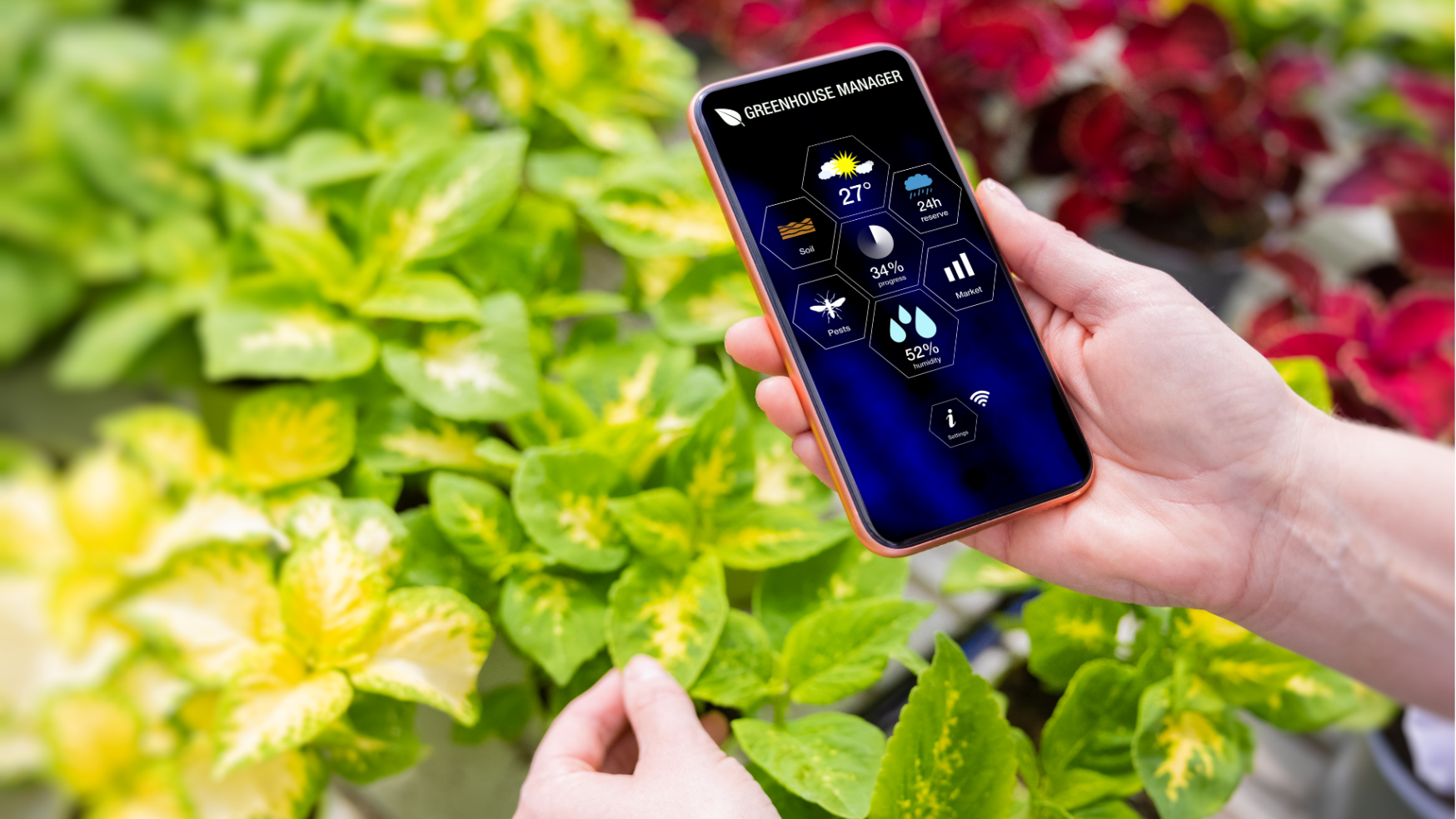Weeds (invasive plant species) reduce biodiversity as well as having other have significant impacts such as loss of habitat, increased fire risk and the costs associated with control. So what can we do about them? Is it enough to rely on governments through environmental legislation to control or eradicate them? Or can actions of home gardeners contribute to protecting natural areas?
Environmental legislation
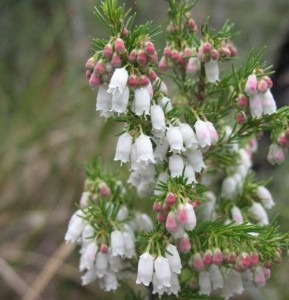
The Australian Government’s central piece of environmental legislation is the Environment Protection and BiodiversityConservation Act 1999 (the EPBC Act). This Act provides a ‘legal framework to protect and manage nationally and internationally important flora, fauna, ecological communities and heritage places – defined in the EPBC Act as matters of national environmental significance’. Laws and regulations relating to weed control exist at the Australian and state and territory government levels. Local governments also usually list weed species in the area and will avoid using them in their parks and reserves. However, it is the responsibility of every land manager or individual to be aware of legislation that may impact upon them, and to act in accordance with the respective legislation.
Spanish Heath
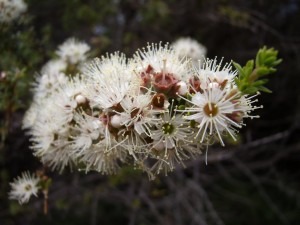
In Tasmania, Erica lusitanica (Spanish Heath), for example, is a Declared Agricultural and Environmental Weed under the Tasmanian Weed Management Act 1999. In native bushland communities, dense infestations of E. lusitanica can displace all native species, and it is highly combustible. The importation, sale and distribution of Spanish heath are prohibited in Tasmania, although I recently saw a stallholder attempting to sell bunches of the flowering stems at a rural market. The local council distributes brochures warning landholders to cut back the weed before flowering, after which millions of tiny seeds are produced and dispersed by poorly-timed slashing, livestock, farming practices, gravity, wind and water. One of its native alternatives, the shyer but showier pink Epacris impressa (Common Heath), is important for re-vegetation programs and provides nectar for honey-eating birds. Calytrix tetragona (Common Fringemyrtle) is also endemic to the coastal heathlands and is a hardy substitute for E. lusitanica in the garden,or in bush revegetation.
Alternatives to weeds
Some of the more ‘aggressive’ Tasmanian east coast environmental weeds and in Victoria can be replaced or controlled by using other species. The Aeonium species (pictured in banner above), although vigorous exotics, provide nectar for birds such as the New Holland Honeyeaters, so deadheading after flowering is finished and disposing of vegetative waste sensibly will curtail their spread.
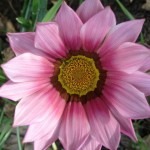
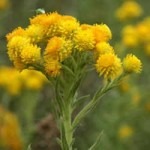
Patches of bright Gazania sp. line the coastal roads; however, it is heartening to see small colonies of Chrysosephalum apiculatum and Stylidium dilatatum re-establishing in the same areas. There are also now sterile varieties of Gazania available commercially and these include G. splendens ‘Montezuma’, ‘Sunset Jane’, ‘Sahara’, ‘Sun About’ and ‘Avalon’.
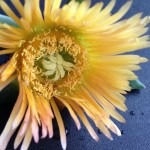
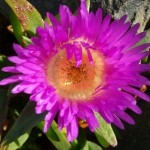
The pale lemon, maturing to pink, flowers of Carpobrotus edulis (Sour or Hottentot Fig) are no match for the beautiful and brilliant pink of the native C. rossii (Karkalla). Not yet declared or considered noxious in Australia by any state government authorities, C. edulis is naturalised in eastern and southern coastal areas of Australia. While it is still only deemed an environmental weed, it has the potential to form vast mono-specific zones, and compete with existing, threatened or endangered plant species for nutrients, water, light and space, thereby lowering biodiversity, as has happened along the Mediterranean and Californian coastlines.
Dealing with an existing weed: Agapanthus spp.
Agapanthus praecox subspecies orientalis is a weed problem in many states because of its hardiness and drought resistance. In the Blue Mountains, for example, rock ledges are congested with thick clumps; the dense, intertwined roots displace all other vegetation and smother native groundcovers. This in turn inhibits seed germination and the regeneration of trees and shrubs, and eliminates habitats for native fauna. Although Agapanthus is actively promoted as a fire-resistant plant for residential gardens in fire-prone areas it could also have an impact on fire frequency in native vegetation, as its presence makes infested bush difficult to burn.
There has been considerable effort put into producing sterile Agapanthus varieties by the nursery industry. This has resulted in Agapanthus orientalis ‘PMN06′ PBR ‘Queen Mum’™ Agapanthus ‘Snowball’ (dwarf white), Agapanthus hybrid ‘Back in Black’, ‘Little Boy Blue’ (dwarf blue) and Agapanthus ‘Agapetite’ (an ‘ultra-miniature’ white). However, Dianella tasmanica (Blue Flax Lily) is a more than worthy native substitute as it provides food for native animals and birds, as does the more delicate, but equally hardy, Bulbine bulbosa.
Dealing with a potential weed: Buddleia davidii
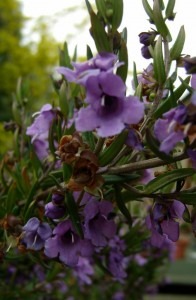
Buddleia davidii (Butterfly Bush) is another widely naturalised weed in parts of eastern New South Wales, in many parts of Victoria, in Tasmania and in south-eastern and southern South Australia, and is currently becoming naturalised in the cooler parts of south-eastern Queensland. It is difficult to control and can produce seeds during its first year; seeds are then viable three to five years. Its dense growth also starves native seedlings of sunlight. Although B. davidii has not yet reached its full potential as an invasive species in Australia, it represents a threat to many vegetation communities including damp sclerophyll forests and, in riparian areas, its shallow root system can result in the erosion of banks during flooding. Modern cultivars of B. davidii have significantly reduced fertility and are non-invasive. B. ‘Spring Promise’ and B. ‘Wattle Bird’ are Australia-raised, non-invasive varieties. Native substitutes, which are butterfly attractive, include the Prostanthera species (Native Mint Bushes), Grevillea species and hybrids, and Callistemon species and hybrids.
Levels of responsibility
In Tasmania, councils are responsible for controlling weeds on their own property but are not responsible for weed management on all property. Under the Weed Management Act 1999, all landholders must take an active part in controlling or eradicating weeds on their property.
The National Weeds Strategy and state weed management plans note that weed management is an essential part of the sustainable management of natural resources and the environment, and it requires an integrated, multidisciplinary approach.
Article and photographs by Dr. Catriona McLeod who is a writer, environmental & cultural consultant, horticulturalist and designer based in Tasmania. With a PhD in green design, she has taught design theory and principles, landscape architecture, ecology, horticulture and sustainable practices at the University of Tasmania. She is a passionate advocate of wild places and the preservation of threatened environments and species and is, of course, an avid and ever-learning gardener. www.catrionamcleod.com
Related Articles:
Citizen Science: A Pathway to Gardening Success and Biodiversity Conservation
In recent years, the realm of science has experienced a remarkable transformation, one that invites people from all walks of life to participate…
A Sustainable Gardener’s Guide to Thrifty Gardening
Creating an eco-friendly and cost-effective garden involves more than just nurturing plants; it's about adopting a sustainable approach that…

